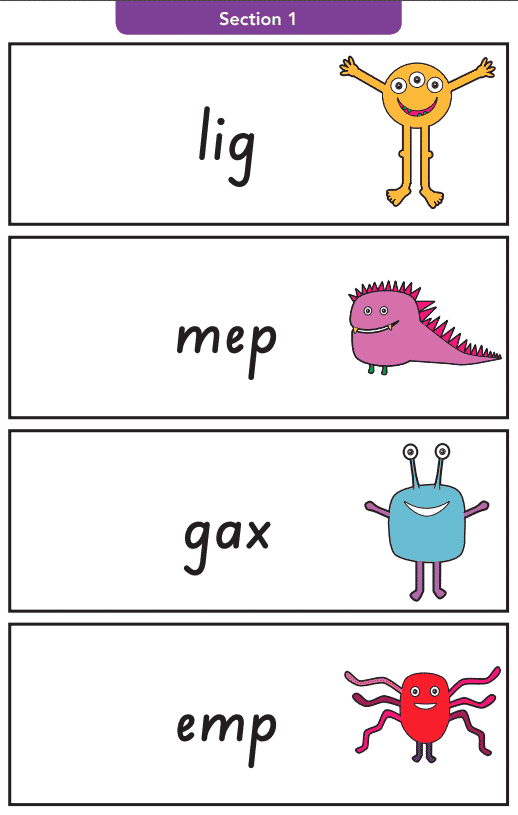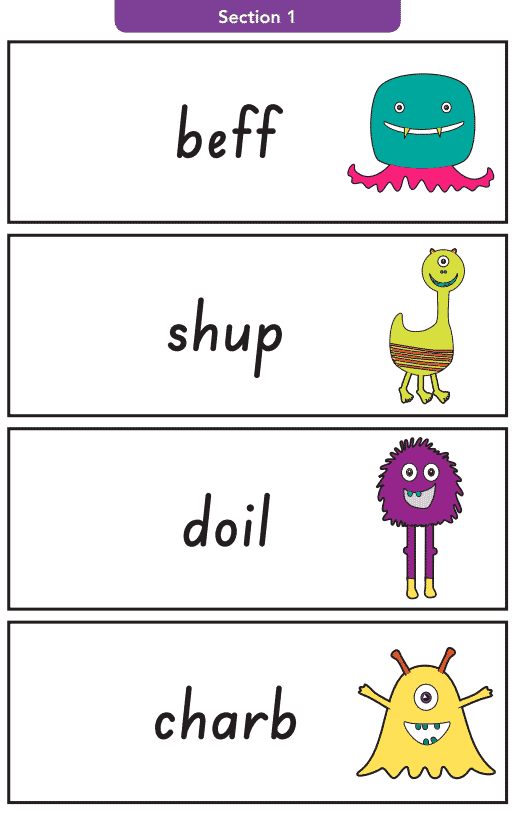To develop strong literacy skills in the junior primary years, students need accurate and fluent vocabulary, comprehension, and oral language skills. The most effective way to teach these skills to students is through the explicit teaching method called “Systematic Synthetic Phonics”. As of 2023, the Year 1 Phonics Check has been implemented across Australia in NSW, SA and WA.
What is the Year 1 Phonics Check?
The short, 7-minute Phonics Check is a helpful screen test that provides teachers with information about students’ phonic decoding ability and assists them in identifying early gaps in students’ decoding and phonic ability. Other benefits of the screen include assessing reading progress and planning early interventions for those children who may be struggling. It is usually performed in Term 3 of Year 1, following 18 months of literacy instruction.
Early Identification and Support Improves Literacy Skills
Across the education system in Australia, there is an awareness that early identification of students who are experiencing difficulties is vital. Students who struggle in the early years struggle to catch up and therefore difficulties in the acquisition of literacy skills need to be identified and supported much earlier.
Assessments such as the Phonics Check assist in identifying students who require help and also assist with the appropriate allocation of funding and resources where gaps are identified. For this reason, PLD supports the introduction of the Phonics Check within Australia as a tool for early detection of phonic knowledge (sound-letter knowledge), and as part of a structured synthetic phonics approach to teaching literacy. As Dr. Lorraine Hammond, LDA president, reminds us, “If you don’t properly measure something, you can’t properly manage it.”
What Does the Year 1 Phonics Check Look Like?
The Year 1 Phonics Check is a 7-minute test that involves presenting 40 words for students to read. These words are a mix of real and nonsense (or pseudo words) which assess a student’s ability to sound out and blend phonemes to read words. Here is a video of the assessment being demonstrated.
To pass the screen in Australia, students are required to score or read a minimum of 28 words correctly. If children fail to attain this threshold mark, they “fail” the screen. This means that these students are required to complete the screen again at the end of the year after receiving intensive phonic instruction.




Download past UK Phonics Screens here.
Adoption of the Year 1 Phonics Check in Australia
In 2021, NSW committed to the introduction of the Year 1 Phonics Check in schools as a result of it being trialed in 520 NSW schools. A survey found that 98% of participating teachers said the assessment provided beneficial information about students’ early reading skills and identified gaps in their literacy development.
However, the first Australian state to adopt the Phonics Check was SA in 2018, after a trial in 2017 produced similar results for students and positive responses from teachers. Since the trial, results have improved each year of the state-wide implementation in South Australia, from 43% achieving the threshold score in 2018, to 52% in 2019, and 63% in 2020.
Additionally, the Australian Government has committed to investing $10.8 million in the development of a free, online phonics health check for Year 1 students and a digital Literacy Hub. Literacy Hub is a free online portal for teachers, school leaders, and families and includes information on how students learn to read, and tailored resources for schools, teachers, and families to support literacy development. It also features an Australian Year 1 Phonics Check which can be downloaded here.
As of 2023, the Year 1 Phonics Check has been implemented across Australia in NSW, SA and WA.
Additional Reading
References
- Year 1 Phonics Check by Literacy Hub. (2022). Education Services Australia.
- 2020 Phonics Screening Check. Government of South Australia. Department of Education.
- 2021 Phonics Screening Check. Government of South Australia. Department of Education.
- Year 1 Phonics Screening Check 2021. Government of New South Wales. Department of Education
- Buckingham, J. & Wheldall, K. (2018) South Australia’s Trial of England’s Year One Phonics Check Shows Why We Need It. The Conversation.
- Hammond, L. (2017). Why do we Need a Phonics Test for Siz-Year-Olds? The Conversation.
- Phonics Screening Check for Student Understanding of Letters and Sounds. Government of South Australia Department of Education.
Related Blog




 print
print